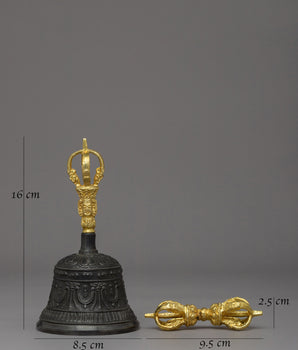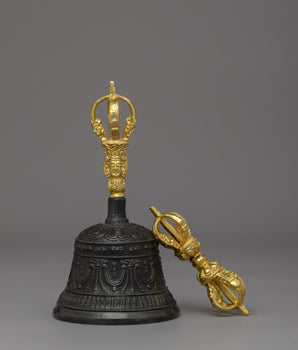Saka Dawa Festival: The Ultimate Expression of Gratitude and Devotion
Saka or Saga Dawa, the month of the Saka star in the Tibetan lunar calendar, is the most sacred Buddhist holiday. During this lunar month, Buddhists commemorate the significant life events of the Buddha, including his birth, enlightenment, and physical death (Maha parinirvana), with utmost devotion and reverence. This annual celebration takes place on the fourth month of the Tibetan lunar calendar and serves as a time for remembrance and cherishing of the Buddha's teachings and impact on the world.
What is Saga Dawa?
The festival of Saka Dawa holds immense significance as it is commonly referred to as the "month of merit" in Buddhism. During this period, practitioners believe that every action, whether good or bad, is magnified by as many as one hundred million times. Therefore, one must be cautious and thoughtful in every aspect of their life during this time. Merits are considered the rewards of good karma that lead to the path of enlightenment. According to Buddhist teachings, there are three fundamental principles for achieving merit: generosity (dana), morality (sila), and meditation (bhavana). These principles help individuals to cultivate positive karma, ultimately leading to spiritual growth and inner peace.
The month of merit allows practitioners to accumulate merits through various actions.
- These actions include refraining from consuming animal products or their byproducts, making donations to monasteries, individual monks, nuns, and nunneries,
- By reciting mantras and prayers (such as the Shakyamuni Buddha mantra or the well-known mantra "Om Mani Padme Hum"),
- By providing financial assistance to the less fortunate, visiting religious sites like Lumbini (the birthplace of Shakyamuni Buddha), Swayambhunath Stupa, Namo Buddha, and Boudhanath Stupa on pilgrimages,
- By purchasing and releasing animals that would otherwise be slaughtered,
- By performing Kora (circumambulating clockwise around a sacred site) while praying or chanting mantras at places like Namo Buddha, Boudha Stupa, and Swayambhunath Stupa in Nepal.
These actions help practitioners to accumulate positive karma and enhance their spiritual growth during the month of merit.
During the month of merit, practitioners worldwide devote themselves to Dharma, generosity, and compassion to accumulate greater values. This practice also serves to cleanse negative karma. Along with commemorating the Buddha's life events, praying is a central theme of this auspicious festival. Practitioners offer prayers for the long and peaceful lives of all Gurus of all traditions who spread the teachings of the Buddha.
People visit monasteries, stupas, holy mountains, lakes, and caves, offering lamps and burning incense while reciting mantras. The Potala Palace in Lhasa is one such place where Tibetans gather to worship during this month. Hundreds of people kneel or stand before the palace, offering their prayers.
The Three Pivotal Events of Shakyamuni Buddha's Life
Click here to view our Hand-Painted Shakyamuni Buddha Thangka
According to Tibetan astrological calculations, Saka means "fourth," and Dawa means "month." Saka is also one of the 28 significant stars. Saka Dawa, which lasts for a month, is celebrated annually on the fourth month of the Tibetan lunar calendar. It is believed that the three most important events of Shakyamuni Buddha's life occurred on the full moon night during this month. Therefore, the full moon night, known as Saka Dawa Duchen, holds the highest significance during this festival.
For the year 2023, it falls on June 04.
The celebration of Saka Dawa holds tremendous significance. This lunar month known as the "month of merits," marks the occurrence of 3 significant life events of Lord Buddha, his birth, enlightenment, and death (parinirvana) on the 15th day of the month. For this reason, Saka Dawa is considered the most auspicious time for Buddhists and is believed to be a time of great merit.
The Miraculous Birth of Shakyamuni Buddha:
Shakyamuni Buddha, the founder of Buddhism, was born in Lumbini, Nepal. He is widely known and revered as the most important Buddha. It was only after he achieved enlightenment that he came to be known as Shakyamuni.
According to Buddhist tradition, "Buddha" means the "awakened one" in Sanskrit. The date of the birth of Shakyamuni Buddha is a topic of debate, as the date mentioned in the scriptures contradicts traditional belief. In Buddhist philosophy, the day he was conceived in his mother's womb is considered the day of his birth rather than the day he was born. Therefore, the full moon day of Vesak month is celebrated as the birth of Buddha Shakyamuni. Moreover, in Buddhism, the initial moment of consciousness with the touch of the parent's cells in the mother's womb is considered the actual birth of an individual.
Attainment of the Spiritual Liberation-Enlightenment:
At 35, Buddha attained enlightenment under the Bodhi tree in Bodhgaya on a full moon night. In many depictions, he is shown sitting on a lotus throne with a moon disc behind him, radiating his enlightened state. He holds an alms bowl resting on his lap in his left hand, while his right hand is in the Bhumisparsha mudra, or the Earth-touching gesture. The alms bowl is said to be filled with three priceless nectars, symbolizing his triumph over the three demons of uncontrollable death, polluted aggregates, and delusion.
The Great Departure (Maha Parinirvana) Of Buddha :
Click here to view our Traditional Thangka Paintings For Prayers
The passing of Shakyamuni Buddha is considered one of the 12 miraculous deeds of his life. He completed his final deeds at 80 and attained Parinirvana in Kushinagar.
During this event, many of Buddha Shakyamuni's disciples, royals, attendants, celestial deities, birds, and animals, gathered to bid him farewell as he rested in the woods. The heavenly beings offered flowers, songs, and dances to honor him. The forest was covered with petals raining down from the sky. Monks, kings, attendants, ministers, and others wept and prostrated themselves before him. They made offerings of corals, jewels, flowers, perfumes, and silk, pleading with him not to leave the world. In response, Buddha Shakyamuni spoke:
"Now monks, I declare you:
All conditioned things are natural to decay
Strive on untiringly."
Embracing The Eight Mahayana Precepts
The full moon day holds significant importance in accumulating merit and is considered the primary day of Saka Dawa. On this day, monks perform a special ceremony early in the morning at the monasteries. Tibetan and other practitioners take the Eight Mahayana precepts to attain enlightenment and guide others towards enlightenment.
These are the Eight Mahayana precepts that practitioners take an oath of on the day of the full moon during Saka Dawa:
- Do not harm or take away anyone's life, directly or indirectly.
- Do not take other people's belongings without their permission.
- Be truthful and honest in your words and actions.
- Do not engage in sexual activity.
- Avoid the consumption of intoxicating substances.
- Have only one meal that day, taken before noon. Once you stop eating for thirty minutes, the meal is considered finished. You can have soft drinks at other times of the day, but not undiluted whole milk or fruit juice with pulp.
- Enjoy simple and humble living, and avoid sitting on expensive beds.
- Be free of materialism, such as jewelry, makeup, and perfumes.
The 8 Mahayana precepts provide a foundational framework for imbuing one's life with meaning and purpose. By following these principles, we can cultivate and deepen our spiritual practice and live in alignment with the highest moral values. These precepts serve as a reliable and effective means for developing, sustaining, and strengthening our commitment to spiritual growth and fulfillment and thus offer a meaningful way to give purpose and significance to our lives.
The Way to Inner Peace: Guidelines for Practicing the 8 Mahayana Precept
According to Lama Zopa Rinpoche, your guru is the person from whom you first receive the Eight Mahayana Precepts. However, suppose a student needs more time to be ready or confident to commit to that person as their guru. In that case, Rinpoche suggests they can take the precepts from the altar until they are prepared to receive them from someone they are willing to accept as their guru.
While taking the precepts from the altar is lovely, having the lineage strengthens one's practice. It is possible to adopt the Eight Mahayana Precepts before taking refuge, and following these precepts with faith is, in essence, taking refuge in the heart.
Saka Dawa is believed to have been officially formalized at the first conference of the World Fellowship of Buddhists held in Sri Lanka in 1950. It is now widely celebrated as an important day in the Buddhist calendar.
This festival is known as Vesak Day in many Asian countries, such as Singapore, Indonesia, and Malaysia. In Nepali and Indian cultures (except for northeastern regions), it is referred to as Buddha Purnima. In Sikkimese and Tibetan cultures, it is known as Saga or Saka Dawa.
Wishing you all an auspicious Happy Saka Dawa in 2023!










